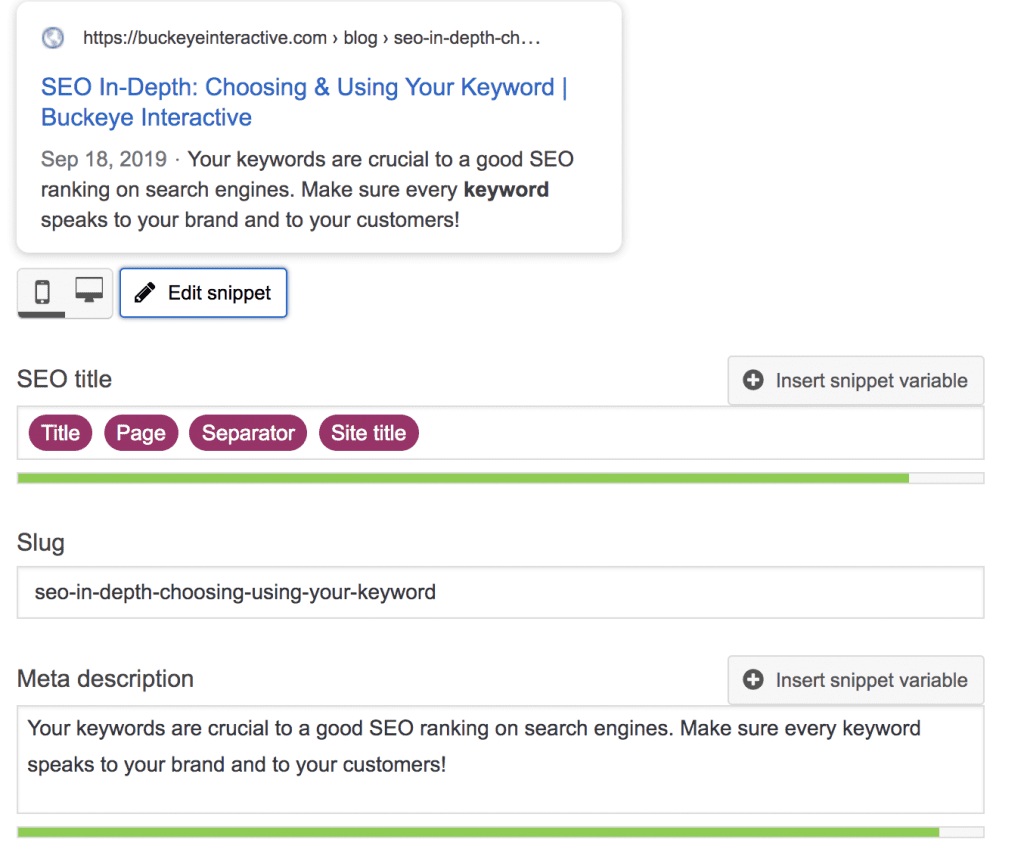We’re continuing our SEO Series this week by taking a closer look at meta descriptions. If you’re even remotely familiar with SEO, you’ve definitely heard these descriptions. They essentially serve as taglines for individual pages and posts on your sites.
Here’s a more technical definition from MOZ:
“The meta description is an HTML attribute that provides a brief summary of a web page. Search engines such as Google often display the meta description—typically up to 160 characters long—in search results where they can highly influence user click-through rates.”
From this definition, it’s evident why meta descriptions are so important: they highly influence your page and overall site traffic. The meta description is like the blurb on the back of the book you’re trying not to judge by its cover. Except meta descriptions are much shorter than blurbs. They’re one to two sentences max, about 155-160 characters in length. That means you need to somehow summarize your entire blog post or web page in one or two sentences. This also means you need to know how to write something that summarizes but also engages your target audience.
Before we get into how you can do that, it’s important you know where to find the meta description both in the search engine and in the back end. In the back end on WordPress sites, the place to enter your description is located at the bottom. You’ll see it as part of the Yoast SEO plugin. You need to click “Edit Snippet,” and then you can write your description directly in there.
This is what it looks like:

And here’s what the meta description looks like live:

Now, how do you go about writing the best meta descriptions possible? There are a few technical ways you can ensure you’re doing this.
First, make sure you include the focus keyword of the page you’re summarizing in your description. This helps your SEO score, and it’s an easy way to make sure your meta description matches your content.
Second, you want to write a description that’s just the right length. This technicality is more for user experience. You don’t want people not clicking on your links just because your description is long or irrelevant. You want them to decide very quickly whether or not your page is what they’re looking for. That said, as you’re writing, there’s a bar that tells you if your description is too long. You need to get it to green.
Third, use active voice in your descriptions. An easy way to do this is to include a call-to-action in the meta description. The call-to-action might be as simple as telling people to learn or read more. For example, here’s the meta description for this blog post (how meta!): “Meta descriptions make your SEO lives easier. Make sure you write descriptions that summarize your content & engage your audience!”
Yes, it’s really THAT simple!
Meta descriptions come after you’ve done all the hard work of preparing content. But that’s exactly what makes them so important: you want to make sure people buy your book & click on your link because what you’re offering is beneficial to them. Feel free to comment below, or contact us if you have any questions!







